Difference between revisions of "Alpaca fur & Llama fur"
| Line 5: | Line 5: | ||
| − | Llamas and alpacas are commonly found in the Andes of [https://www.youtube.com/watch?v=LDmkdFwqTt8&list=PLdGEmp0I4Bawry89Il_c1uc1F7M0Tr7sx South America]. They are predominantly used as load animals, but their meat is eaten, wool is extracted from the hair, and leather is made from the skin. Alpacas are smaller and sturdier, llamas have more pointed ears. Alpacas and llamas come from the heights of the Andes and their fur protects against night temperatures of up to minus 40 degrees. | + | Llamas and alpacas are commonly found in the Andes of [https://www.youtube.com/watch?v=LDmkdFwqTt8&list=PLdGEmp0I4Bawry89Il_c1uc1F7M0Tr7sx South America]. They are predominantly used as load animals, but their meat is eaten, wool is extracted from the hair, and leather is made from the skin. Alpacas are smaller and sturdier, llamas have more pointed ears. Alpacas and llamas come from the heights of the Andes and their [[Fur - Fur skin|fur]] protects against night temperatures of up to minus 40 degrees. |
The wool and fur of the alpaca have special characteristics. Their hair is fat free, hollow and very fine. Hair without fats are anti-allergenic. The hollow hair structure is excellent for cold weather. The hair of the alpaca is 0.02 millimetres strong and soft. Therefore, it does not scratch. In comparison, a human hair is 0.06 millimetres thick. Alpaca herds are also kept in other countries and regions mainly because of the extraction of the wool. | The wool and fur of the alpaca have special characteristics. Their hair is fat free, hollow and very fine. Hair without fats are anti-allergenic. The hollow hair structure is excellent for cold weather. The hair of the alpaca is 0.02 millimetres strong and soft. Therefore, it does not scratch. In comparison, a human hair is 0.06 millimetres thick. Alpaca herds are also kept in other countries and regions mainly because of the extraction of the wool. | ||
| Line 39: | Line 39: | ||
== Additional information == | == Additional information == | ||
* [[Hide - Skin]] | * [[Hide - Skin]] | ||
| − | * [[Fur]] | + | * [[Fur - Fur skin]] |
<br> | <br> | ||
* [[Sheepskin - Lambskin]] | * [[Sheepskin - Lambskin]] | ||
Revision as of 14:07, 18 December 2016
Llamas and alpacas are commonly found in the Andes of South America. They are predominantly used as load animals, but their meat is eaten, wool is extracted from the hair, and leather is made from the skin. Alpacas are smaller and sturdier, llamas have more pointed ears. Alpacas and llamas come from the heights of the Andes and their fur protects against night temperatures of up to minus 40 degrees.
The wool and fur of the alpaca have special characteristics. Their hair is fat free, hollow and very fine. Hair without fats are anti-allergenic. The hollow hair structure is excellent for cold weather. The hair of the alpaca is 0.02 millimetres strong and soft. Therefore, it does not scratch. In comparison, a human hair is 0.06 millimetres thick. Alpaca herds are also kept in other countries and regions mainly because of the extraction of the wool.
Alpaca at Lake Titicaca and Lama at Salar de Uyuni in Bolivia.
Roasted alpaca in Peru, Machu Picchu, Llama steak in Bolivia, La Paz.
Wonderful warm Alpaca fur slippers from Lima in Peru. - Alpaca fur-accessories from the market in Aguas Calientes, Peru, below Machu Picchu.
Additional information







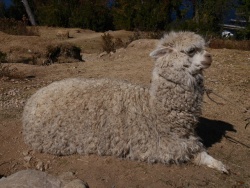
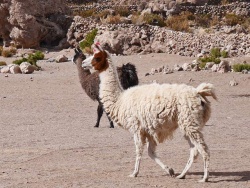
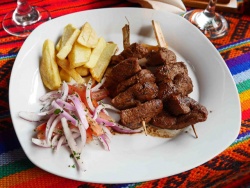
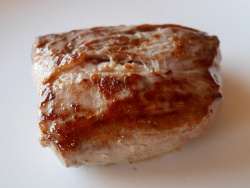
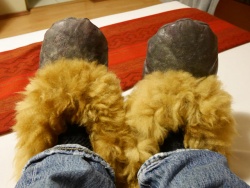
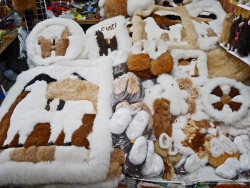

 a kotori web solution
a kotori web solution